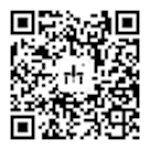
Frequently Asked Questions
After-sales knowledge aims to provide answers to potential questions regarding maintenance and repair, and we hope this is helpful to you.
Common Problems of Coordinate Measuring Machines
Probe Knowledge
Common Problems of Probe Holders
Machine Maintenance
-
Q 1What Are the Two Types of CMM Probe Heads?A
CMM probe heads are divided into contact and non-contact types. 1. Contact Probe Heads Contact probe heads use mechanical probes for measurement. After the mechanical probe contacts the surface of the measured object, sensors measure the movement of the probe and output the measurement results. Contact probe heads offer high accuracy and are suitable for dimensional measurement in most industrial manufacturing fields. However, since contact probe heads must touch the surface of the measured object to perform measurement, errors may occur when measuring objects with complex shapes or surfaces with burrs or irregularities. 2. Non-Contact Probe Heads Non-contact probe heads typically use optical or laser probes. These probes do not need to contact the surface of the measured object and can obtain 3D coordinate information through scanning, projection, or other methods. Compared to contact probe heads, non-contact probe heads perform better when measuring objects with complex shapes, irregular surfaces, or high precision requirements, avoiding errors caused by probe contact with the object surface. However, non-contact probe heads are less accurate than contact probe heads and have a relatively narrower suitable measurement range. In summary, based on the structure and measurement principles of CMM probe heads, they can be divided into contact and non-contact types. In practical work, the appropriate probe head type should be selected based on factors such as the shape, surface properties, and precision requirements of the measured object.
-
Q 2How to Correctly Choose a CMM Probe Head?A
Probes are typically fixed on CMMs through probe heads. The probe signals are connected to the probe interface of the CMM control system via the probe head. There are various types of probe heads, mainly divided into manually rotatable probe heads, fixed probe heads, and omnidirectional probing systems. 1. For small, manual CMMs, manually rotatable probe heads are particularly suitable due to their lack of special cable and circuit requirements. These compact, comprehensive probe head systems allow operators to easily calibrate the tip data for required positions during element measurement. Once calibrated, no recalibration is needed for subsequent probe positioning, significantly saving inspection time. Most manually rotatable positioning probe heads have a repeatability of 1.5 μm. 2. Advantages and Disadvantages of Fixed Probe Heads: Fixed probe heads are compact, occupy less space on the CMM, and have a simple structure and low cost. Their overall structure is rigid, allowing for the installation of longer probes. Fixed probe heads offer some flexibility; when equipped with an automatic probe changing system, they can also handle complex situations with high accuracy. However, fixed probe heads have lower accessibility when measuring different elements, sometimes requiring the use of star-shaped or T-shaped probes. Additionally, fixed probe heads are less efficient, and probe replacement takes longer. 3. Omnidirectional probing systems have nearly become standard equipment for CNC measuring machines due to their superior performance. They are a cost-effective solution for measuring complex parts, especially those requiring probing from different directions. Fixed probe heads, unable to rotate, require multiple probes for measuring complex parts but occupy less space on the CMM and have no rotational error. Advantages and Disadvantages of Omnidirectional Probing Systems: Omnidirectional probing systems offer strong flexibility, allowing a single probe to measure parts from different directions. These systems enable quick rotation and repositioning, are highly automated, integrate seamlessly with the CMM control system, and are extremely user-friendly. They can also be combined with automatic probe changing systems to expand functionality. However, the downside of such probe systems is that they occupy more space on the CMM. Rotation speed: Can rotate 90 degrees and position within 3.5 seconds. Positioning accuracy: With a probe length of 62 mm, repeatability is 0.5 μm.

